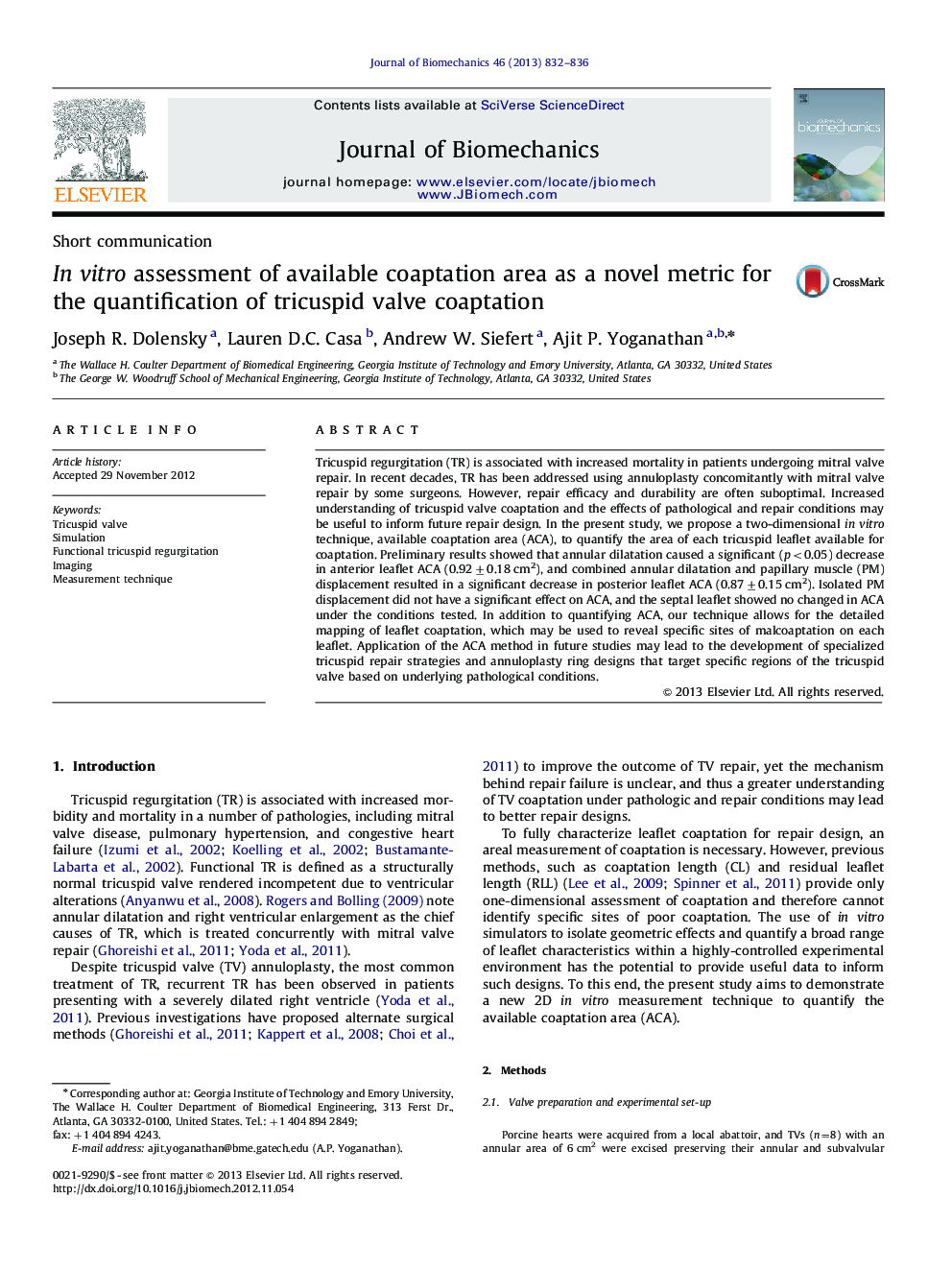| Article ID | Journal | Published Year | Pages | File Type |
|---|---|---|---|---|
| 10432960 | Journal of Biomechanics | 2013 | 5 Pages |
Abstract
Tricuspid regurgitation (TR) is associated with increased mortality in patients undergoing mitral valve repair. In recent decades, TR has been addressed using annuloplasty concomitantly with mitral valve repair by some surgeons. However, repair efficacy and durability are often suboptimal. Increased understanding of tricuspid valve coaptation and the effects of pathological and repair conditions may be useful to inform future repair design. In the present study, we propose a two-dimensional in vitro technique, available coaptation area (ACA), to quantify the area of each tricuspid leaflet available for coaptation. Preliminary results showed that annular dilatation caused a significant (p<0.05) decrease in anterior leaflet ACA (0.92±0.18 cm2), and combined annular dilatation and papillary muscle (PM) displacement resulted in a significant decrease in posterior leaflet ACA (0.87±0.15 cm2). Isolated PM displacement did not have a significant effect on ACA, and the septal leaflet showed no changed in ACA under the conditions tested. In addition to quantifying ACA, our technique allows for the detailed mapping of leaflet coaptation, which may be used to reveal specific sites of malcoaptation on each leaflet. Application of the ACA method in future studies may lead to the development of specialized tricuspid repair strategies and annuloplasty ring designs that target specific regions of the tricuspid valve based on underlying pathological conditions.
Related Topics
Physical Sciences and Engineering
Engineering
Biomedical Engineering
Authors
Joseph R. Dolensky, Lauren D.C. Casa, Andrew W. Siefert, Ajit P. Yoganathan,
